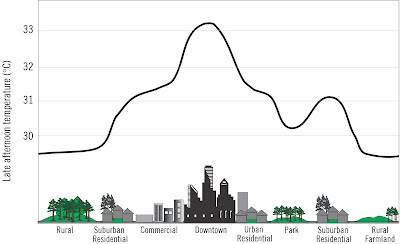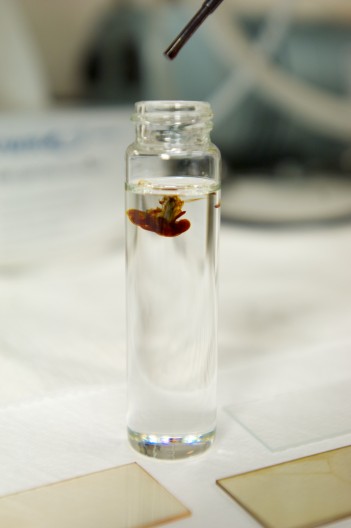Urban Renewal and a Dash of White Paint
A recent study published in the April 2012 edition of Environmental Research Letters, the Journal of the British Institute of Physics, and entitled The Long-Term Effect of Increasing the Albedo of Urban Areas, looks at proposals to make cities more sunlight reflective by painting roofs white and using light-coloured materials in paved areas. The authors, Hashem Akbari, H. Damon Matthews and Donny Seto, of Concordia University in Montreal, argue that pavement and roofs represent more than 60% of city surfaces. Dark roofs and asphalt are solar energy traps responsible for much of the heat effect cities experience. Called the heat island effect, cities are much warmer than their surrounding rural settings. This extra heat contributes to increased energy usage for air conditioning. The heat also plays a role in urban smog leading to increases in human respiratory diseases. And finally the heat is the primary cause of weather-related deaths effecting both young and the elderly frail.

The authors argue that reflective surfaces create a high albedo reducing the rate of heat absorption in urban surfaces. If you are not familiar with the term albedo, in scientific terms it is the fraction of light striking a surface that gets reflected from that surface. Objects with high albedo tend to be light. Objects with low albedo tend to be dark. Snow and ice have high albedo. That’s why the presence of snow in winter conditions contributes to further atmospheric cooling. The absence of snow, however, lets the uncovered land surface absorb light, convert it to heat and warm the air above it, a low albedo effect.
To obtain high albedo and reduce the heat island effect in urban areas the authors argue that a simple white coat of paint would provide an immediate cooling effect. They propose as cities renew infrastructure that paved areas use materials that are light-coloured which will increase their reflectivity.
It should be understood that with only 0.05% of the world’s land masses covered by cities a dash of white paint won’t do anything to mediate global atmospheric warming but it sure can help keep your urban neighbourhood a little cooler in the summer.
Solar Energy You Can Paint On Your House
University of Southern California researchers have created a liquid containing solar cells made from nanocrystals. Richard Brutchey and David Webber’s research is featured in Dalton Transactions, an international journal for inorganic chemistry. The solar nanocrystals are four nanometers in size. You can fit 250 billion of them on the head of a pin. In liquid they can be painted or printed on to a surface and represent a much cheaper way to produce solar energy.

The solar nanocrystals are not as efficient in generating electricity as current photovoltaic silicon wafers but their abundance makes up for this. By making the liquid suspension an efficient conductor the nanocrystals can build tiny bridges among them to transmit electricity. The liquid can be painted on almost any surface material and the result solar panel can be shaped to fit anywhere.
The researchers used cadmium, a highly toxic substance, in creating their nanocrystals. They are now looking at less toxic materials to create their solar cell paint, coming soon to a big box hardware store near you.








